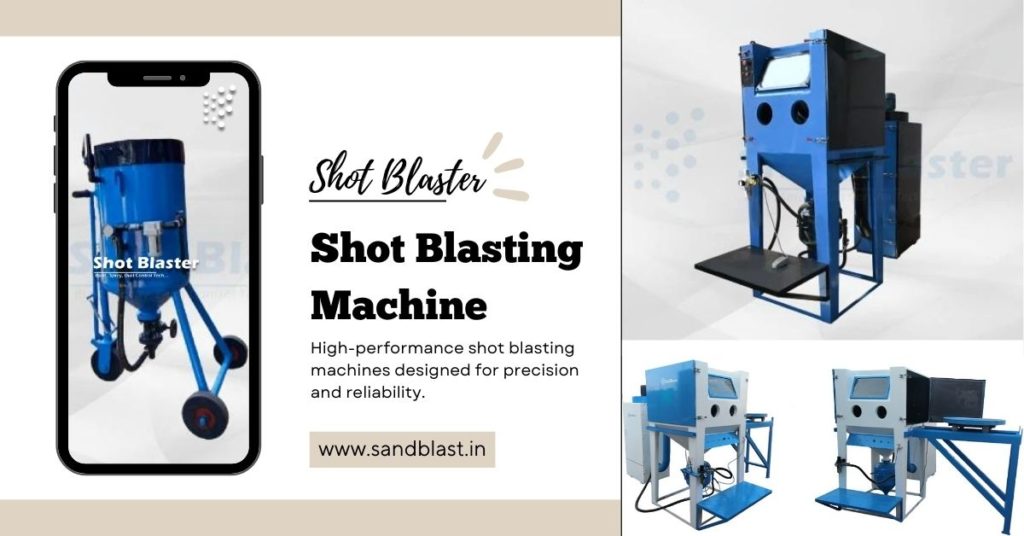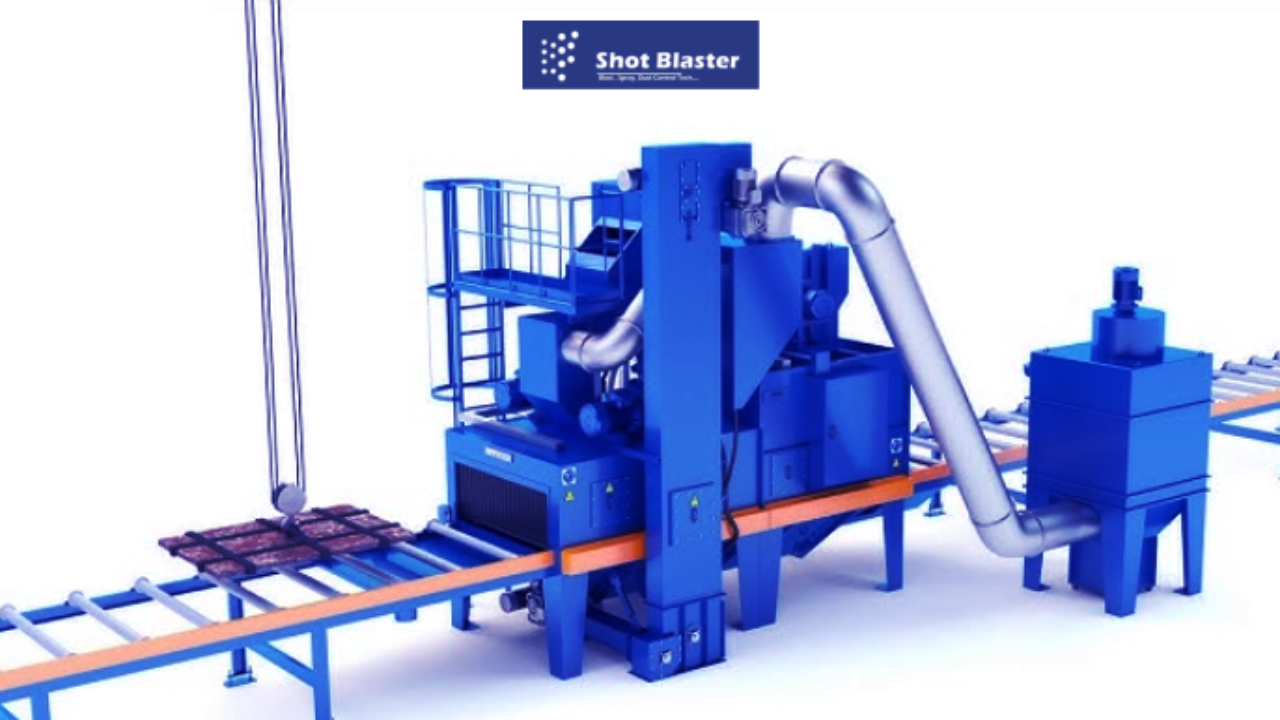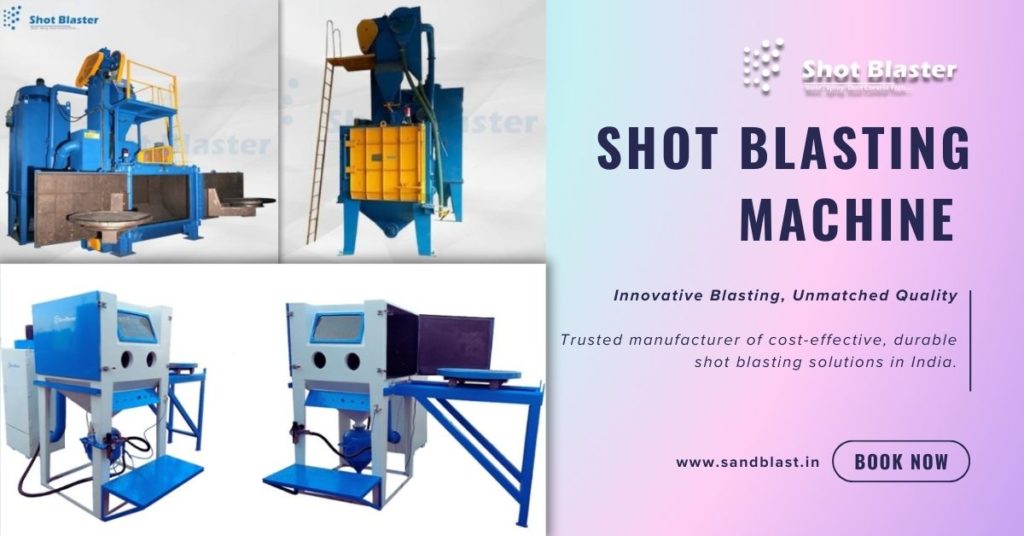Discover the essential installation guidelines for shot blasting machines, including step-by-step instructions and expert tips for the correct setup. Perfect for professionals and industrial users seeking to optimize their shot blaster installation.

Introduction
When it comes to optimizing your shot blasting machine, proper installation is paramount. Whether you’re looking to maintain your existing equipment or set up a new shot blaster, following the essential installation guidelines ensures maximum efficiency, safety, and longevity. A shot blasting machine, also known as a shot blaster, plays a vital role in surface preparation, helping businesses maintain and refurbish various materials such as metals, concrete, and stone.
But before the blasting process begins, it’s crucial to get the installation right. Skipping steps or missing key guidelines could not only hinder the performance of the shot blaster but also compromise the safety of operators.
This article will walk you through the essential installation guidelines for shot blasting machines, offering practical tips and insights to make your installation process smoother, safer, and more efficient.
Why Is Proper Installation of Shot Blasting Machines Important?
Before diving into the installation steps, let’s first address why getting this process right is so critical.
- Efficiency Boost: A properly installed shot blasting machine runs more efficiently, saving both time and money.
- Safety First: Faulty setups can lead to accidents, endangering workers. An accurate installation minimizes these risks.
- Longevity: When installed correctly, your machine can last longer and provide better performance over time.
- Consistency in Results: Proper installation ensures the machine functions at its peak, offering consistent and high-quality outcomes.
Now that we understand the importance of installation, let’s explore the key guidelines that you should follow for successful shot blaster installation.
Essential Installation Guidelines for Shot Blasting Machines
Installing a shot blasting machine isn’t just about placing it in a corner and plugging it in. It involves a series of careful steps, from understanding the machine’s requirements to ensuring that it’s connected to the necessary utilities. Here are the essential installation guidelines for shot blasting machines:
1. Choose the Right Location
The location where you install your shot blaster is crucial for both performance and safety. A few things to keep in mind when choosing the spot:
- Adequate Space: Ensure there is enough room for the machine and any accessories. You’ll also need space for operators to work safely.
- Ventilation: Shot blasting generates a lot of dust. Proper ventilation is necessary to keep the air quality safe and to prevent the buildup of harmful materials.
- Access to Utilities: Your shot blaster will need access to electrical power, compressed air, and, in some cases, water. Make sure the location has easy access to these utilities. For more information visit URL – https://www.sandblastingmachine.in/hanger-type-shot-blasting-machines
2. Level the Ground
A shot blasting machine needs to be installed on a level surface. If the ground isn’t level, it could cause vibration, instability, and premature wear on the machine. A stable installation will also ensure that the machine’s components are aligned and operate smoothly.
- Check for Flatness: Before positioning the machine, use a level to ensure that the surface is flat.
- Use Vibration Dampers: If the area is prone to vibrations, install vibration dampers to reduce the risk of machine wear and tear.
3. Install a Power Supply and Wiring System
Your shot blaster needs a steady power supply to operate effectively. Improper wiring or insufficient power could lead to malfunctions. Here’s how to approach this step:
- Check Power Requirements: Before you begin installation, check the voltage and power ratings specified by the manufacturer.
- Hire a Professional Electrician: It’s highly recommended to hire a licensed electrician to handle the electrical setup. Improper installation of power lines can be dangerous and could void your warranty.
- Circuit Breaker and Fuses: Ensure that the machine is connected to an appropriate circuit with the necessary fuses and safety switches.
4. Compressed Air System Setup
Shot blasting machines rely heavily on compressed air to propel the abrasive media onto surfaces. If the air supply is insufficient or the system is not set up correctly, the performance of the shot blaster can be compromised.
- Check Air Pressure: Ensure that the compressor can provide the required air pressure as outlined in the machine’s manual.
- Install Moisture Traps: Moisture can damage your equipment and affect performance. Install moisture traps or air dryers to ensure that the air supply is clean and dry.
- Check Hose Connections: Inspect air hoses and connections for leaks. A single air leak can significantly reduce efficiency.
Read the full article – https://riyasingh258.blogaaja.fi/how-to-choose-the-right-shot-blasting-machine-for-your-needs/
5. Install Dust Collection Systems
Dust and debris are byproducts of the shot blasting process. To maintain a safe and clean working environment, install a dust collection system that can handle the volume of dust generated during operation.
- Choose the Right Filter: Make sure that the filter is of sufficient size and capacity to handle the dust produced by the machine.
- Proper Ventilation: Ensure that the dust collection system is connected to adequate ventilation to direct dust away from workers and sensitive equipment.
- Regular Maintenance: Clean the filters regularly to avoid blockages and ensure optimal dust collection.
Also Check – Best Industrial Shot Blasting Machine Compared to Ambica Enterprises
6. Position and Secure the Machine
Now that your utilities are set up and your location is ready, it’s time to position the shot blaster. Here’s how to ensure proper placement:
- Place the Machine on the Prepared Surface: Carefully position the machine in its designated space.
- Level and Secure: Use anchor bolts or other securing methods to fix the machine in place.
- Check Alignment: Double-check the machine’s alignment to ensure it’s properly positioned and that all components are straight.
7. Connect the Abrasive Media Supply
Shot blasting machines need an adequate supply of abrasive media to perform their job. Here’s how to install the media system:
- Check Media Requirements: Consult the machine’s manual to determine the type and amount of abrasive media the machine requires.
- Install Feed System: Make sure the feed system is properly connected, and there are no blockages or leaks.
- Inspect for Safety: Ensure that the abrasive media is stored in a safe and dry area to prevent contamination.
8. Final System Check and Test Run
Before putting the shot blaster into full operation, it’s essential to perform a final system check and a test run. This step helps identify any potential issues before the machine is used in a production environment.
- Check All Connections: Inspect all air, electrical, and media connections for any leaks or issues.
- Perform a Dry Run: Run the shot blaster without abrasive media first to ensure that everything is functioning properly.
- Monitor Performance: During the test run, monitor the machine for any unusual sounds, vibrations, or performance issues.
Read the full guide – https://riyasingh258.blogaaja.fi/a-complete-guide-to-understanding-shot-peening-machines/
FAQs About Shot Blaster Installation
1. Do I need a licensed professional for installation?
Yes, it’s highly recommended to hire professionals, particularly for electrical and air compressor installations. Incorrect setups can lead to dangerous situations and equipment failure.
2. How long does it take to install a shot blaster?
Installation time varies depending on the complexity of the system, but it generally takes anywhere from 1-3 days for a complete installation.
3. What is the ideal environment for a shot blasting machine?
The ideal environment should be well-ventilated, spacious, and free from excess moisture. It should also be away from high-traffic areas to ensure safety.
4. Can I install the shot blaster myself?
While it’s possible for someone with technical expertise to handle the installation, hiring professionals for specialized tasks (like electrical or air compressor setup) is always the safer route.
Also Check – How to improve efficiency with shot blasting machines?
Conclusion
Installing a shot blaster requires precision, attention to detail, and adherence to essential installation guidelines. Following the steps outlined in this article will ensure that your “shot blasting machine” operates efficiently and safely. From choosing the right location and leveling the ground to connecting utilities and performing a final system check, every stage plays a critical role in the machine’s long-term performance.
Remember, a well-installed shot blaster not only optimizes productivity but also minimizes downtime and reduces the risk of costly repairs. By taking the time to follow these installation guidelines, you’re setting your machine – and your business – up for success. So, get ready, gear up, and install your shot blaster the right way!



